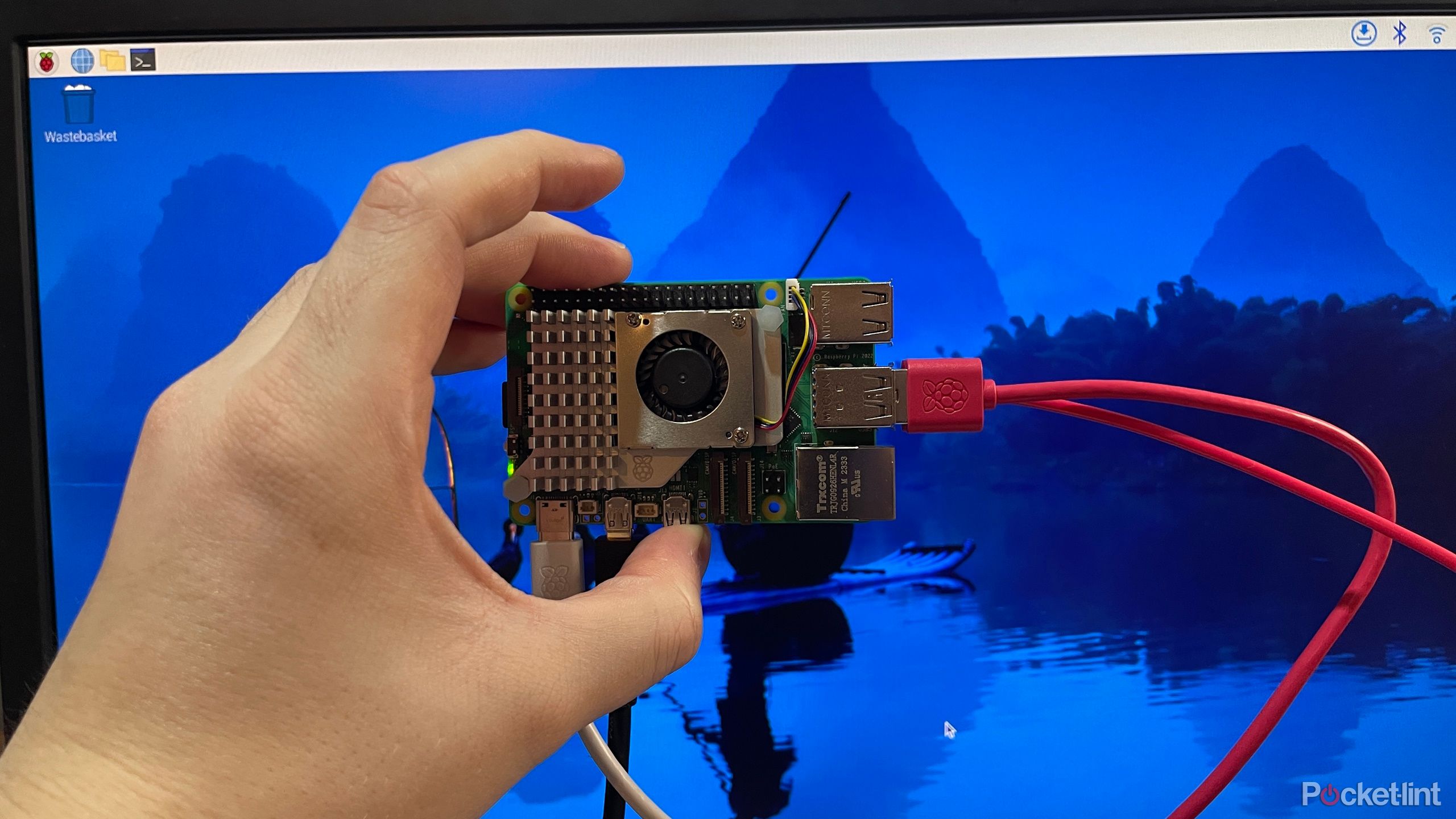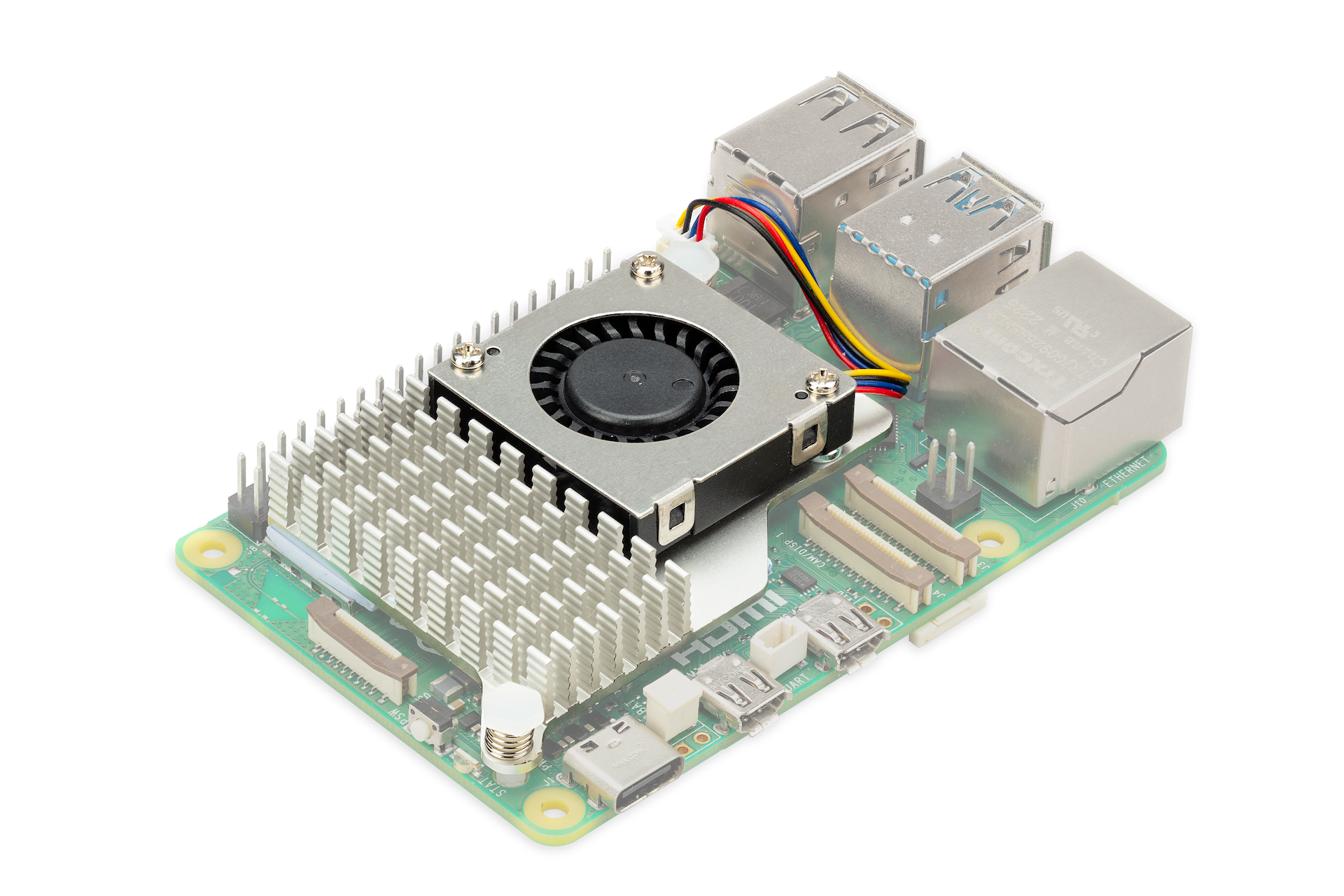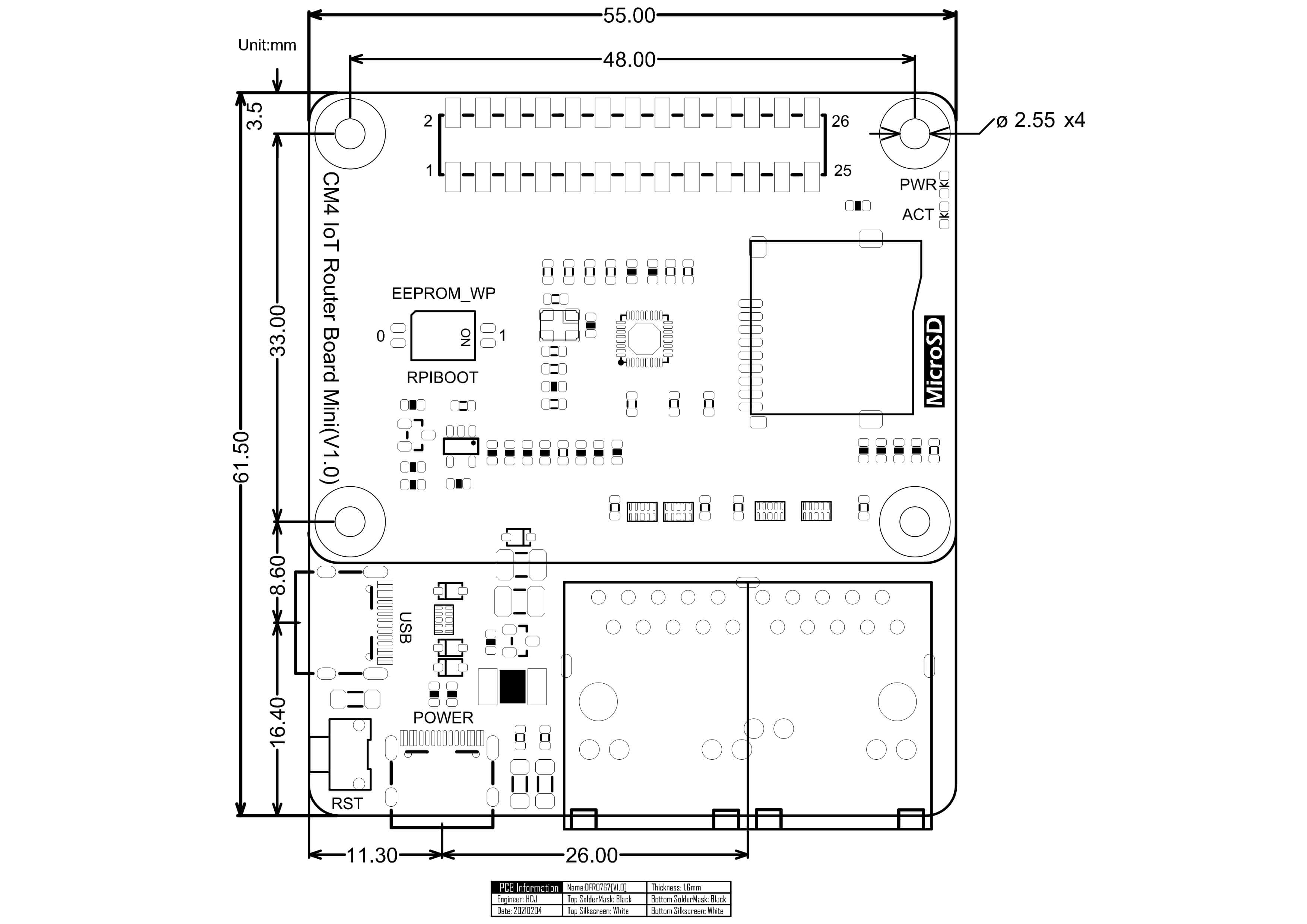Remote IoT Guide: Best Raspberry Pi Behind Router Setup Solutions
Ever felt limited by the confines of your local network when trying to access your Raspberry Pi-powered IoT projects? Mastering remote access to your Raspberry Pi behind a router is no longer a luxury but a necessity for unleashing the true potential of your IoT endeavors.
Whether you're a seasoned developer orchestrating a complex network of sensors or a hobbyist tinkering with home automation, the ability to seamlessly connect to your Raspberry Pi from anywhere in the world opens up a universe of possibilities. This article navigates the complexities of configuring your Raspberry Pi for remote IoT, providing you with the knowledge and tools to establish a secure and reliable connection, regardless of your location.
| Remote IoT Expert Profile | |
|---|---|
| Name: | Dr. Evelyn Reed |
| Area of Expertise: | Embedded Systems and Remote IoT |
| Education: | Ph.D. in Electrical Engineering, Massachusetts Institute of Technology (MIT) |
| Career Highlights: |
|
| Professional Information: |
|
| Contact: | LinkedIn Profile: linkedin.com/in/evelynreediotexpert (This is a sample link) |
Let's delve into the core of enabling robust remote IoT capabilities for your Raspberry Pi setup, specifically when it's nestled behind a router. The challenges of accessing devices within a private network are well-known. Routers, by design, shield internal devices from direct external access, acting as gatekeepers to maintain network security. This necessitates implementing strategic solutions to circumvent these restrictions and establish a secure and reliable tunnel to your Raspberry Pi.
Several effective methods exist for achieving this, each with its own set of advantages and considerations. Port forwarding, while a common approach, requires careful configuration and an understanding of network protocols. VPNs offer a more secure and versatile solution, creating an encrypted connection that protects your data from eavesdropping. Reverse proxies provide another layer of abstraction, allowing you to expose specific services running on your Raspberry Pi without directly exposing the device itself. Choosing the right method depends on your specific needs, technical expertise, and security requirements.
Port Forwarding: A Classic Approach
Port forwarding involves configuring your router to redirect traffic from a specific external port to the internal IP address and port of your Raspberry Pi. This is a straightforward method for accessing specific services, such as a web server or SSH, running on your Pi. To implement port forwarding, you'll need to access your router's configuration panel, typically through a web browser. Locate the port forwarding or virtual server section, and create a new rule that maps the desired external port to your Raspberry Pi's internal IP address and port. For example, you might forward external port 80 to your Raspberry Pi's internal IP address on port 80 to access a web server. Similarly, you could forward port 22 for SSH access. While simple, port forwarding has security implications. Exposing ports directly to the internet can make your Raspberry Pi vulnerable to attacks. It's crucial to use strong passwords and keep your software up to date to mitigate these risks. Furthermore, some ISPs block certain ports, such as port 22, which may require you to use alternative ports for SSH.
VPN: Secure and Versatile
A Virtual Private Network (VPN) provides a more secure and versatile solution for remote access. A VPN creates an encrypted tunnel between your device and your Raspberry Pi, protecting your data from interception. Several VPN solutions are well-suited for Raspberry Pi, including OpenVPN and WireGuard. OpenVPN is a mature and widely used VPN protocol that offers robust security features. It can be configured on your Raspberry Pi to act as a VPN server, allowing you to connect to your home network from anywhere in the world. WireGuard is a newer VPN protocol that is known for its speed and simplicity. It is also relatively easy to configure and offers excellent security. To set up a VPN server on your Raspberry Pi, you'll need to install the VPN software and configure it with appropriate security settings. You'll also need to install a VPN client on your device to connect to the VPN server. Once connected, your device will have access to all the devices on your home network, including your Raspberry Pi.
Reverse Proxy: Exposing Services Securely
A reverse proxy acts as an intermediary between the internet and your Raspberry Pi, allowing you to expose specific services without directly exposing the device itself. This can enhance security and simplify network configuration. Popular reverse proxy solutions include Nginx and Apache. To set up a reverse proxy, you'll need to install the reverse proxy software on a separate server or virtual machine. You'll then configure the reverse proxy to forward traffic to your Raspberry Pi based on specific rules. For example, you could configure the reverse proxy to forward traffic to your Raspberry Pi's web server based on the domain name or URL. The reverse proxy can also handle SSL/TLS encryption, ensuring that your data is transmitted securely over the internet. This approach can be particularly useful if you have multiple services running on your Raspberry Pi that you want to expose to the internet. By using a reverse proxy, you can manage access to these services from a single point and enforce security policies.
Dynamic DNS: Overcoming Dynamic IP Addresses
Most home internet connections use dynamic IP addresses, which means that your IP address can change periodically. This can make it difficult to connect to your Raspberry Pi remotely, as you'll need to know your current IP address. Dynamic DNS (DDNS) services solve this problem by providing a static hostname that always points to your current IP address. When your IP address changes, the DDNS service automatically updates the hostname to reflect the new IP address. Several DDNS providers offer free or paid services. To use a DDNS service, you'll need to create an account with a provider and configure your router or Raspberry Pi to update the hostname whenever your IP address changes. This can be done using a DDNS client, which is typically included with the DDNS service or available as a separate package. Once configured, you can use the static hostname to connect to your Raspberry Pi remotely, regardless of your current IP address.
Remote Access Tools: Simplifying the Connection Process
Several remote access tools can simplify the process of connecting to your Raspberry Pi remotely. These tools provide a user-friendly interface for managing your Raspberry Pi and accessing its resources. Popular remote access tools include TeamViewer, VNC, and SSH. TeamViewer is a remote desktop software that allows you to control your Raspberry Pi's desktop remotely. It is easy to set up and use, and it offers a variety of features, including file transfer and screen sharing. VNC (Virtual Network Computing) is another remote desktop protocol that allows you to access your Raspberry Pi's desktop remotely. It is a more lightweight solution than TeamViewer and is often preferred for low-bandwidth connections. SSH (Secure Shell) is a command-line tool that allows you to access your Raspberry Pi's terminal remotely. It is a secure and efficient way to manage your Raspberry Pi from the command line. To use these tools, you'll need to install the appropriate software on your Raspberry Pi and your device. You'll also need to configure the software to allow remote access.
Security Considerations: Protecting Your Raspberry Pi
Security is paramount when setting up remote access to your Raspberry Pi. Exposing your Raspberry Pi to the internet can make it vulnerable to attacks. It's crucial to take appropriate security measures to protect your device and your data. Use strong passwords for all user accounts on your Raspberry Pi. Disable the default "pi" user account and create a new user account with a strong password. Keep your software up to date. Regularly update your operating system and software packages to patch security vulnerabilities. Use a firewall to restrict access to your Raspberry Pi. Configure the firewall to allow only the necessary ports and services. Use a VPN to encrypt your traffic and protect your data from eavesdropping. Implement intrusion detection and prevention systems to monitor your Raspberry Pi for suspicious activity. Regularly back up your data to protect against data loss. By taking these security measures, you can significantly reduce the risk of your Raspberry Pi being compromised.
Optimizing Your Remote IoT Setup
Once you've established a secure and reliable remote connection to your Raspberry Pi, you can start optimizing your setup for remote IoT applications. This involves configuring your Raspberry Pi to run efficiently and reliably, even when operating remotely. Use a lightweight operating system. A lightweight operating system will consume less resources and improve performance. Consider using a headless operating system, which does not include a graphical user interface. Optimize your code for performance. Use efficient algorithms and data structures to minimize resource consumption. Monitor your Raspberry Pi's performance. Use monitoring tools to track CPU usage, memory usage, and network traffic. Implement logging to track errors and debug issues. Use a watchdog timer to automatically reboot your Raspberry Pi if it crashes. By optimizing your setup, you can ensure that your Raspberry Pi runs smoothly and reliably, even when operating remotely.
Best Tools for Remote IoT Behind Router
Selecting the right tools is essential for building a robust and efficient remote IoT system with your Raspberry Pi. Several software and hardware options can significantly enhance your experience. Some of the best tools include: Remote.it: Simplifies remote access without complex configurations. It creates a secure connection to your devices behind NAT and firewalls. Dataplicity: Offers easy remote access and management of your Raspberry Pi through a web browser. It includes features like terminal access, file management, and web application hosting. Weaved: Provides secure remote access to your Raspberry Pi using a simple web interface. It supports a variety of services, including SSH, VNC, and web servers. ngrok: Exposes local servers behind NATs and firewalls to the public internet. It's useful for testing and debugging web applications running on your Raspberry Pi. RealVNC Connect: Offers secure and reliable remote access to your Raspberry Pi's desktop. It's a commercial solution with advanced features like file transfer and screen sharing. By leveraging these tools, you can streamline your remote IoT development and deployment process.
Specific Remote IoT Applications
The ability to remotely access your Raspberry Pi unlocks a wide range of applications. Consider these examples: Remote Monitoring: Use your Raspberry Pi to monitor environmental conditions, such as temperature, humidity, and air quality, and access the data remotely. Home Automation: Control your home appliances, lighting, and security systems remotely using your Raspberry Pi. Industrial Automation: Automate industrial processes and monitor equipment performance remotely using your Raspberry Pi. Data Logging: Collect data from sensors and log it to a remote database for analysis. Remote Control: Control robots, drones, and other devices remotely using your Raspberry Pi. The possibilities are endless. By combining the power of the Raspberry Pi with remote access capabilities, you can create innovative and impactful IoT solutions.
Advanced Configurations and Troubleshooting
While the methods described above provide a solid foundation for remote IoT, you may encounter situations that require more advanced configurations and troubleshooting. Here are some tips for addressing common issues: Firewall Configuration: Ensure that your firewall is configured correctly to allow remote access to your Raspberry Pi. Check your firewall rules to ensure that the necessary ports are open. Network Address Translation (NAT): Understand how NAT works and how it affects remote access. Configure your router to forward traffic to your Raspberry Pi correctly. DNS Resolution: Ensure that your DNS settings are configured correctly. Use a reliable DNS server to resolve domain names. VPN Configuration: Troubleshoot VPN connection issues by checking your VPN server and client settings. Security Audits: Regularly audit your security settings to identify and address potential vulnerabilities. By understanding these advanced configurations and troubleshooting techniques, you can overcome common challenges and ensure a smooth and secure remote IoT experience.
The Future of Remote IoT with Raspberry Pi
The field of remote IoT is constantly evolving, and the Raspberry Pi is playing an increasingly important role. As technology advances, we can expect to see even more innovative solutions for remote access and management. Some of the key trends shaping the future of remote IoT include: Edge Computing: Processing data locally on the Raspberry Pi to reduce latency and bandwidth requirements. Artificial Intelligence (AI): Using AI to analyze data and automate tasks remotely. 5G Connectivity: Enabling faster and more reliable remote connections. Low-Power Wide-Area Networks (LPWAN): Connecting remote devices with low power consumption. Cybersecurity: Developing more robust security measures to protect remote IoT devices. By staying informed about these trends, you can leverage the latest technologies to build cutting-edge remote IoT solutions with your Raspberry Pi.
Setting up remote IoT behind your router involves a few key steps, ensuring seamless connectivity and secure access to your Raspberry Pi. Whether you're a hobbyist, developer, or part of a larger enterprise, mastering these techniques is essential for unlocking the full potential of your IoT projects. Remember, best remoteiot behind router raspberry pi solutions not only enhance your projects but also provide a robust and efficient way to manage your devices from anywhere in the world.



Detail Author:
- Name : Soledad Becker
- Username : kariane.daniel
- Email : bashirian.emmie@yahoo.com
- Birthdate : 1971-02-09
- Address : 675 Stephan Grove Port Alexandremouth, SD 85286-8159
- Phone : +1 (678) 570-9936
- Company : Stroman Ltd
- Job : Director Of Talent Acquisition
- Bio : Rerum aut totam maiores est. Saepe qui quaerat molestiae minima facilis sint ad debitis. Aspernatur animi cum deleniti pariatur cupiditate facilis. Sed enim molestiae illo et sunt.
Socials
tiktok:
- url : https://tiktok.com/@karsonwilliamson
- username : karsonwilliamson
- bio : Eius officia ullam aspernatur aliquam id nemo quibusdam.
- followers : 587
- following : 1291
facebook:
- url : https://facebook.com/karson4950
- username : karson4950
- bio : At expedita ipsa quam similique dolorum. Hic ut unde est est laboriosam est.
- followers : 1704
- following : 156
twitter:
- url : https://twitter.com/karson9006
- username : karson9006
- bio : Et modi suscipit atque quam culpa exercitationem est at. Recusandae amet eum hic similique ex.
- followers : 2091
- following : 1006
linkedin:
- url : https://linkedin.com/in/kwilliamson
- username : kwilliamson
- bio : Ut vel vel blanditiis eum omnis alias.
- followers : 4962
- following : 941
instagram:
- url : https://instagram.com/kwilliamson
- username : kwilliamson
- bio : Rerum eligendi tenetur repellat itaque reiciendis. Omnis sunt incidunt molestiae et autem.
- followers : 782
- following : 1980